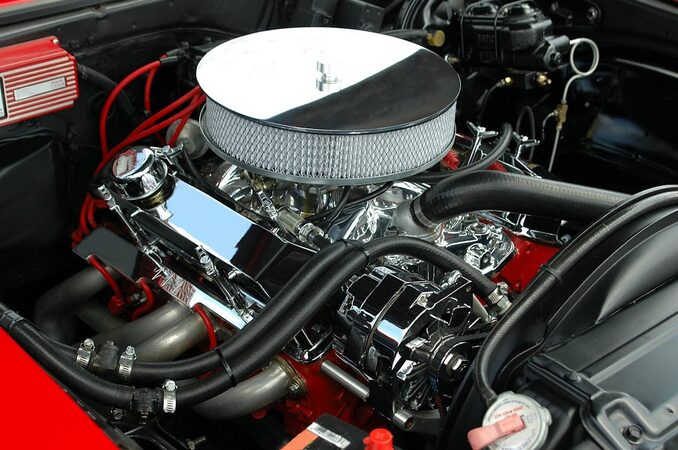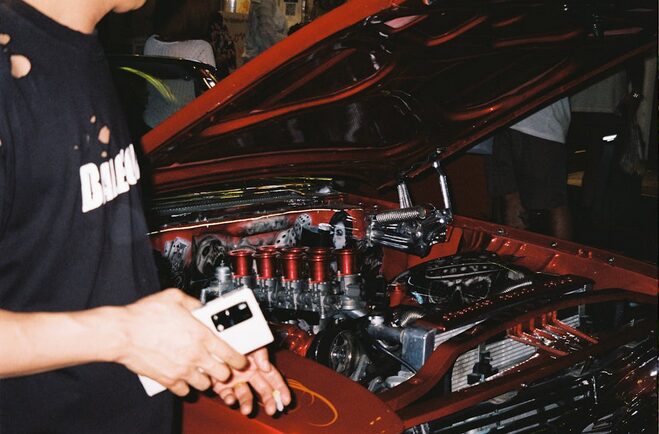The Hidden Innovations Fueling Today’s Automotive Powerhouses

In a world where the roar of engines and the hum of electric motors dominate our roads, there lies an unseen revolution quietly reshaping the automotive landscape. While headlines often spotlight sleek designs and record-breaking speeds, it’s the ingenious innovations lurking beneath the surface that are truly driving today’s automotive powerhouses into a new era.
From groundbreaking materials to smart manufacturing techniques, these hidden gems are not just enhancing performance but redefining sustainability and safety in ways we never imagined possible. Buckle up as we dive deep into the cutting-edge technologies and creative solutions that are propelling vehicles from mere machines into intelligent companions on our journeys.
Turbocharging: Boosting Power Without the Extra Weight
One of the most exciting technologies in modern engines is the turbocharger. A turbo works by forcing extra air into the engine’s combustion chamber, which allows the engine to burn more fuel and produce more power without needing a bigger, heavier engine. Essentially, it’s a way to make smaller engines perform like larger ones.
Turbocharging is especially useful in high-performance cars, where every ounce of power counts. By using exhaust gases to spin a turbine that compresses air, turbochargers provide an efficient power boost, giving cars the ability to accelerate faster and reach higher speeds. It’s the perfect balance between performance and weight – two critical factors in any high-performance vehicle.
Direct Fuel Injection: More Power, Better Efficiency

Another technology that’s playing a huge role in modern engines is direct fuel injection (DFI). Unlike traditional fuel injection systems, which mix fuel with air before it enters the combustion chamber, DFI injects fuel directly into the chamber itself at very high pressure. This allows for a much more precise control of the fuel mixture, leading to better combustion efficiency and more power from the same amount of fuel.
The benefits of DFI are clear: it boosts engine power while improving fuel efficiency. It also reduces harmful emissions, making it a win for both performance and the environment. Today, many high-performance engines use this technology to deliver smoother, more responsive acceleration while keeping fuel consumption in check.
Variable Valve Timing: Adapting to Every Driving Condition
High-performance engines need to perform at their best across a wide range of conditions, from idle speeds to full-throttle acceleration. That’s where variable valve timing (VVT) comes in. This technology allows the engine to adjust the timing of its intake and exhaust valves, optimizing performance based on the engine’s speed and load.
By adjusting valve timing, VVT helps achieve better fuel efficiency at low speeds and maximum power at high speeds. This implies that whether you’re cruising on the highway or driving your car to its limits on the track, the engine is always running at peak performance. This adaptability is crucial for modern high-performance engines, where versatility is just as important as raw power.
Hybrid and Electric Powertrains: The Future of Speed
The future of high-performance engines isn’t just about bigger and faster combustion engines. Hybrid and electric powertrains are making their mark, offering instant torque and unmatched efficiency. Electric motors can deliver immediate power to the wheels, which is why many modern supercars now feature hybrid systems that combine the best of both worlds: the heart-pounding speed of a combustion engine with the seamless torque delivery of an electric motor.
Take the Ferrari SF90 Stradale, for example. This hybrid supercar uses both a V8 engine and three electric motors to deliver a mind-blowing 986 horsepower. It’s a glimpse into the future, where high performance doesn’t have to come at the expense of efficiency or sustainability.
Lightweight Materials: Strengthening Performance and Efficiency

To make high-performance engines even more effective, engineers have turned to lightweight materials like carbon fiber, aluminum, and titanium. These materials are not only incredibly strong but also much lighter than traditional metals, reducing the overall weight of the car and allowing for faster speeds and better fuel economy.
For example, many modern sports cars use carbon fiber in their body panels and chassis, reducing weight without sacrificing strength. This means the engine doesn’t have to work as hard to propel the car, leading to improved acceleration and handling. It’s another piece of the puzzle that makes today’s high-performance engines more efficient and capable than ever before.
Advanced Cooling Systems: Keeping Engines at Their Best
As engines become more powerful, they also generate more heat. That’s why advanced cooling systems are critical in maintaining engine performance. Modern high-performance cars use a variety of cooling technologies, including larger radiators, intercoolers, and water-to-air cooling systems, to keep temperatures in check.
By maintaining an optimal operating temperature, these cooling systems ensure that the engine runs smoothly and reliably, even under high stress. Without proper cooling, an engine can overheat, leading to a loss of power and potential damage. These systems are essential for keeping high-performance engines running at their best during intense driving conditions.


